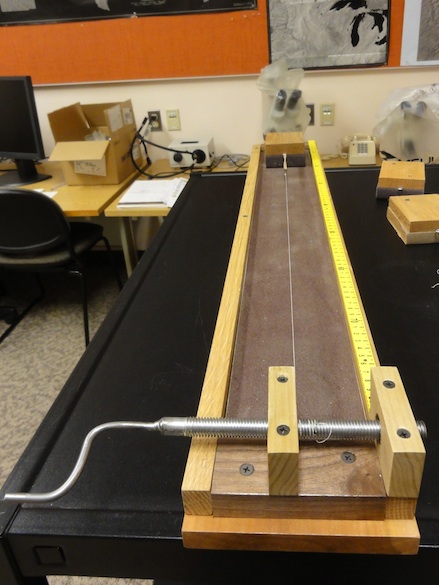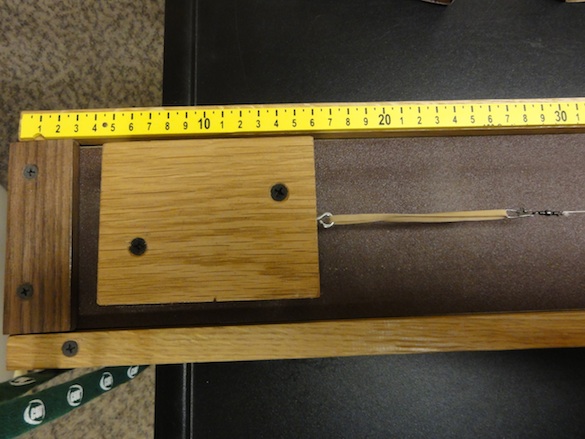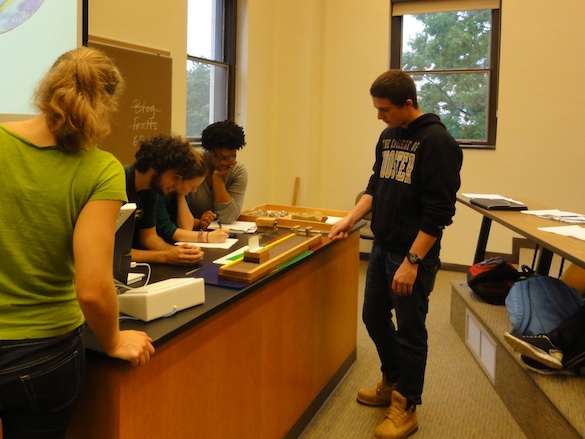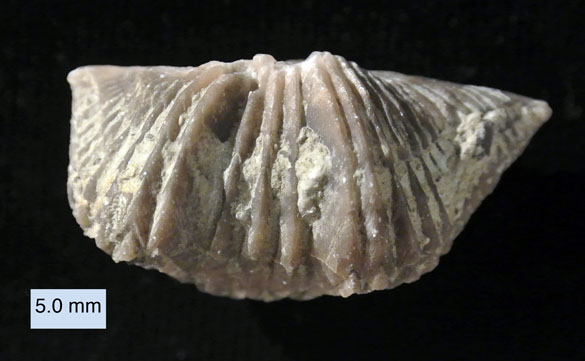 I begin my Invertebrate Paleontology course by giving each student a common fossil to identify “by any means necessary”. This year I gave everyone a gray little brachiopod, one of which is shown above. They did pretty well. Kevin Silver (’13) got it down to the genus quickly. Turns out a Google image search on “common fossil” is very effective!
I begin my Invertebrate Paleontology course by giving each student a common fossil to identify “by any means necessary”. This year I gave everyone a gray little brachiopod, one of which is shown above. They did pretty well. Kevin Silver (’13) got it down to the genus quickly. Turns out a Google image search on “common fossil” is very effective!
This is Mucrospirifer mucronatus (Conrad, 1841), a beautiful spiriferid brachiopod from the Silica Shale Formation (Middle Devonian) of Paulding County, northwestern Ohio. I collected it and many others at a quarry on a crisp October day with my friend and amateur paleontological colleague Brian Bade.
 The image at the head of this page is a view of the dorsal valve exterior of Mucrospirifer mucronatus; the image immediately above is the ventral valve exterior. Spiriferid brachiopods like this are characterized by extended “wings” and a long hingeline. Inside was their defining feature: a spiral brachidium that held a delicate tentacular feeding device known as the lophophore.
The image at the head of this page is a view of the dorsal valve exterior of Mucrospirifer mucronatus; the image immediately above is the ventral valve exterior. Spiriferid brachiopods like this are characterized by extended “wings” and a long hingeline. Inside was their defining feature: a spiral brachidium that held a delicate tentacular feeding device known as the lophophore.
 This is the anterior of our brachiopod. The fold in the middle helped keep incurrent and excurrent flows separate, enabling more efficient filter-feeding. (By the way, have you noted the quirky asymmetry of this specimen?)
This is the anterior of our brachiopod. The fold in the middle helped keep incurrent and excurrent flows separate, enabling more efficient filter-feeding. (By the way, have you noted the quirky asymmetry of this specimen?)
 A view of the quarry that yielded our Fossil of the Week. Note the happy amateurs picking through blast piles of the Silica Shale Formation (Middle Devonian).
A view of the quarry that yielded our Fossil of the Week. Note the happy amateurs picking through blast piles of the Silica Shale Formation (Middle Devonian).
 A pond in the quarry. It has an unexpected beauty, muddy as it is.
A pond in the quarry. It has an unexpected beauty, muddy as it is.
 Timothy Abbott Conrad (1803-1877) described Mucrospirifer mucronatus in 1841. We met him before when discussing a siliquariid gastropod. He was a paleontologist in New York and New Jersey, and a paleontological consultant to the Smithsonian Institution.
Timothy Abbott Conrad (1803-1877) described Mucrospirifer mucronatus in 1841. We met him before when discussing a siliquariid gastropod. He was a paleontologist in New York and New Jersey, and a paleontological consultant to the Smithsonian Institution.
Reference:
Tillman, J.R. 1964. Variation in species of Mucrospirifer from Middle Devonian rocks of Michigan, Ontario, and Ohio. Journal of Paleontology 38: 952-964.




































